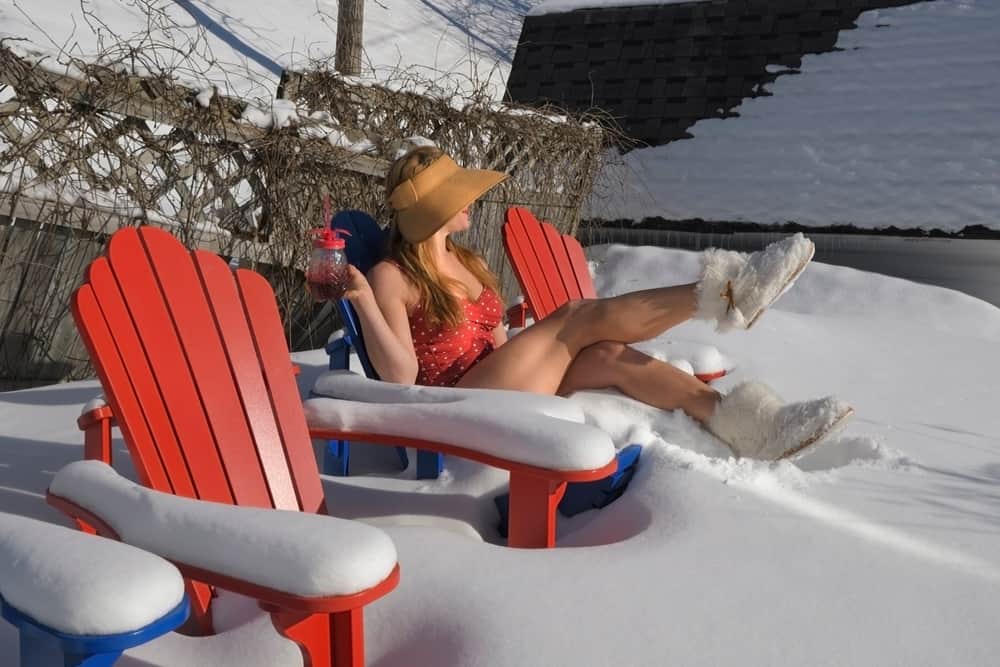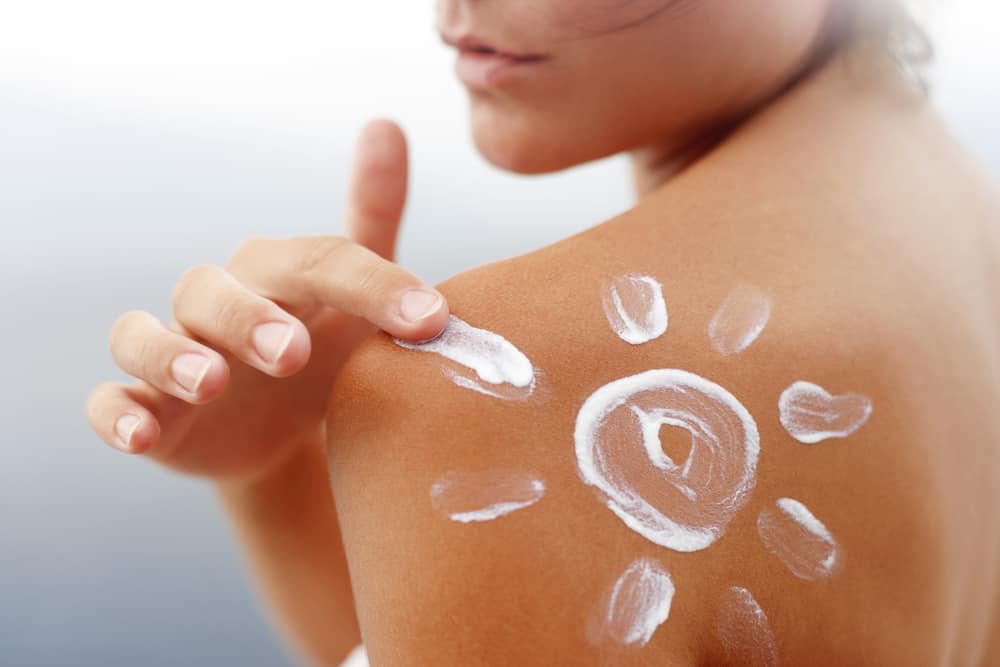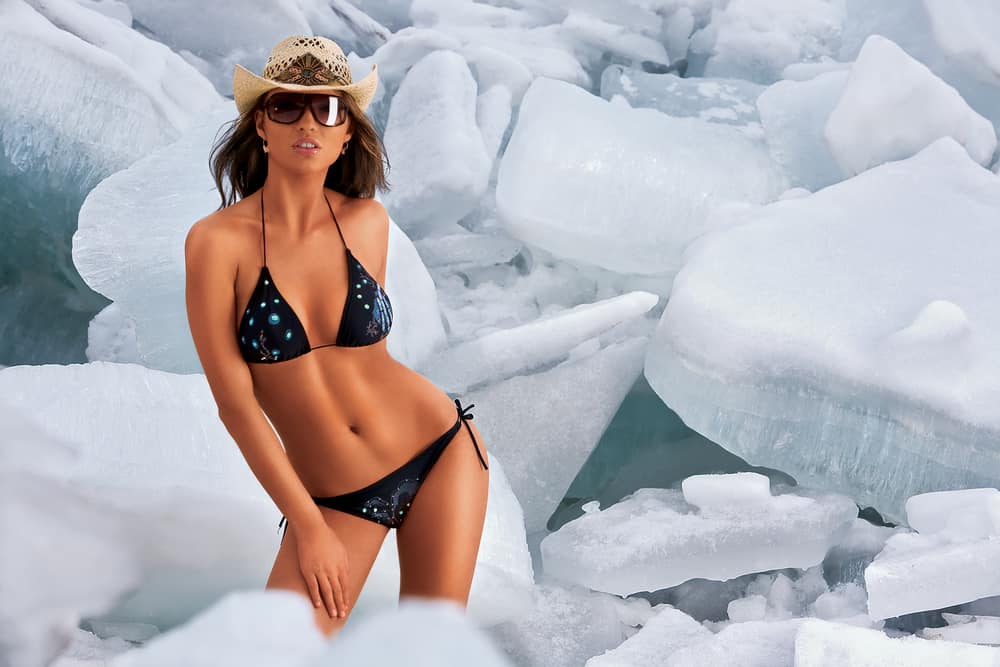
A lot of people feel that they look their best when they are tan.
In the summer, it’s easy to get a tan just by spending a few minutes outside in the sun.
Some people tan without even trying.
But, can you get a tan in the winter?
Can You Get A Tan In The Winter?

It is possible to tan in the winter just as it is possible to tan in the summer.
Anytime you tan outdoors or indoors, however, you increase your risk of skin damage and developing skin cancer.
Many people make the mistake of thinking it is safe to tan in the winter, but the risks are the same any time of year.
If you do choose to tan in the winter, you will need to decide if you plan to tan outdoors or indoors and then make the proper arrangements to prepare yourself for the desired type of tanning.
While both options can give you a tan, the experiences are very different.
Can You Tan Outside In The Winter?

You can tan outside in the winter, but it could take some time before you get the golden tan skin you desire.
The sun is further away from the earth during the winter, so it’s not as strong, and won’t tan you as quickly.
You will need to be prepared to spend a lot of time outdoors in the sun if you want to tan this way.
A tanning bed is another option to consider.
This is the fastest and most popular way to tan in the winter.
Tanning beds can tan you quickly, and because they are indoors, you won’t have to worry about braving the weather to get the tan you want.
Keep in mind that indoor tanning is slightly more risky than outdoor tanning, so you must take proper precautions no matter which method you decide to use to get your tan.
When Is The Best Time To Tan In The Winter?

The best time to tan in the winter is when the sun is at the highest point in the sky.
This can vary based on your location but should be between the hours of 10 am and 1 pm.
During this time, the sun will cover the most area and you should be able to find a clear spot to tan.
You can tan during other times of the day, too, but the sun may not be as strong, so you will not get a tan as fast.
During the summer, some people avoid tanning during this time of day because the rays of the sun are so strong, but in the winter, it’s the best time to achieve any type of tan.
The length of time it takes to tan in the winter is determined by your natural skin tone, how long you tan, and the time of day in which you tan.
Everybody is different, and while it can take one person a couple of days to tan, it could take someone else several weeks.
Because the weather can be colder in the winter, most people won’t spend a lot of time outdoors working on their tan.
Instead, they will choose a few hours during the sunniest time of day.
You will need to be in the sun for two to three hours a day before you see any results.
It is possible to burn in the winter, so it’s important to pay attention to your skin to see if you are tanning or getting burned.
Why Is It Harder To Tan In The Winter?

Tanning in the winter is possible, but it isn’t ideal due to the difficulties associated with this time of year.
In the summer and spring, the sun is usually shining brightly most of the day, and everyone is excited to spend time outside.
In the winter, it can be the opposite, which makes it harder to get the tan you want.
The cold weather is one of the main reasons people are less likely to tan in the winter.
You can’t tan if your skin is covered, and most people don’t want to be outside in their swimsuits when the weather is cold.
The cold weather also makes it hard to stay outside for a long time, so you may not get enough exposure to the sun to get the tan you want.
The sun has to work harder during the winter to shine through the atmosphere and reach Earth.
In the summer, the atmosphere is thinner and the sun’s rays are able to penetrate it more easily.
In the winter, clouds, storms, snow, and atmospheric pressure are stronger.
When you do feel the sun in the winter, it simply won’t be as strong as it is in the summer, and it can take a lot longer for you to notice any results when you are tanning.
No matter what time of year it is, if it is considered winter in your location, it means the sun is further away from you.
During winter, the sun is not as close to the earth as it is in the summer.
The orbit of the earth is elliptical.
This means it does not circle the sun in a perfectly circular pattern.
At some points in the year, the earth is looping around at a greater distance.
The further the earth is away from the sun, the weaker its rays and the longer it takes for the sun to reach Earth so you can get a good tan.
Bad weather is common in the winter.
Many areas of the world experience a lot of rain, ice, and snow.
Even if the elements are not terrible, there may be a lot of clouds and an overcast sky.
It can be hard to find a clear day when the sun is shining and you are able to get outside and enjoy it.
It’s hard enough to tan when the temperatures are low, but most people aren’t willing to sit outside in the rain or snow on a cloudy and overcast day to attempt to tan.
Winter Tanning Tips

If you are going to tan in the winter, you should know that it may be more difficult, but it is possible.
As long as you have some patience and a plan, you can still achieve that golden glow, no matter what time of year it is.
You should be aware of the risk and difficulties that come with winter tanning so you can avoid them if possible and tan comfortably and safely.
These tips and suggestions can help you.
1. Choose The Best Time
Make sure you choose the right time to tan.
Whether you decide to try your luck tanning outside or will be visiting a tanning bed, make sure you have enough time to spend the required amount tanning.
If you are tanning outside, you will need to spend at least three hours in the sun to notice any results.
If you are planning to go indoor tanning, you should spend 10 to 15 minutes in a tanning bed to get the results you want.
You will also need to tan several days a week if you want it to be noticeable and last.
2. Use A Bronzer
If you are in a hurry to see results or are trying to get tan in time for a trip or special occasion, you may want to use a tanning oil or lotion that contains a bronzer.
These lotions are available for both indoor and outdoor tanning.
The bronzer is activated by the rays of the sun.
As you tan and even for a short time after, the bronzer continues to darken, so it makes your tan more noticeable.
Bronzers do wash off in the shower, so if you decide to use a bronzer while tanning, make sure you wait a little while after you tan to shower.
3. Take A Trip
No matter where you live, there is likely somewhere that is getting more sun and would be a better place to tan.
If the area where you live is too cold to tan or if the sun just doesn’t seem to be peeking through the clouds enough to tan, consider taking a trip somewhere warmer and tropical.
Here, it will be easier to spend more time outside, so you will be more likely to get a good tan.
The sun may also be stronger in these areas, which means you won’t have to work so hard to get the tan you want.
4. Use Sunscreen
Many people make the mistake of trying to tan in the winter without sunscreen.
Although the sun can be weaker and may not get through the atmosphere as easily, it can still cause sunburn, especially for people who have fair skin.
Always wear sunscreen any time you are outside.
It might take you longer to achieve the tan you want, but it will prevent you from getting burnt and could reduce the risk of skin cancer.
A sunburn can also often lead to peeling skin, which can also make your tan less noticeable.
Wearing sunscreen will help protect your skin and ensure any tan you do get lasts longer.
5. Take Vitamins
Your skin needs certain vitamins in order to stay healthy and tan.
The body produces Vitamin D when it is exposed to the sun, but in the winter, it may be lacking enough sun to produce enough of this vitamin.
You can take supplements that will help keep you healthy no matter what season it is.
There are plenty of other vitamins such as Vitamin E and Vitamin C that also affect the health of your skin and can help you tan more easily, retain your tan longer, and keep your skin healthy so you won’t experience dry skin and peeling after you tan.
6. Avoid Alcohol
While few things are as relaxing to some people as lying on the beach or by the pool with a cool alcoholic beverage while you tan, it can actually prevent you from achieving your desired tan.
Alcohol dehydrates the body and can pull moisture from your skin.
When your skin is dry, it is less likely to absorb the rays of the sun and tan.
It is also more likely to dry out after tanning, and it can flake and peel quickly, revealing the lower layers of the skin that are not tan.
If you are trying to get the perfect tan this winter, skip the alcoholic drinks.
7. Stay Hydrated
While you might think it’s easier to get dehydrated in the summer when you are hot and sweating, it’s actually just as easy to get dehydrated in the winter.
In the winter, the air seems to be drier and less humid, which means your body can become dehydrated quickly.
In the summer, you feel hot and sweaty and know it’s time to get something to drink.
In the winter, you may not feel hot and may just forget to drink as much because you simply aren’t as thirsty.
When you’re tanning, it’s important to drink plenty of water to avoid dehydration and to keep your skin soft and moisturized so it can absorb the sun’s rays more easily to achieve a proper tan.
8. Use Moisturizer
Moisturizer is your skin’s best friend when you are tanning.
Although tanning can make you feel more attractive, it can also lead to early aging.
Dry skin shows wrinkles and fine lines more easily and can make your skin look dull and ashy.
When you add a moisturizer, it softens the skin so it’s less likely to show wrinkles and helps lock in your body’s natural moisture so even when you are tanning, the sun and winter weather won’t be able to pull it away from your skin.
When your skin is properly moisturized you will notice it tans faster and darker.
It will also feel better and won’t be itchy once you have tanned.
Is It Safe To Tan In The Winter?

Anytime you are exposed to the sun, you are increasing your risk of sunburn and skin damage.
Dermatologists warn that tanning can be dangerous whether you are tanning outdoors or using an indoor tanning bed.
It’s important to understand the risks associated with tanning before you start doing so.
If you insist on tanning, it’s a good idea to use a good sunscreen, and limit your exposure to the sun for the first few sessions so you can develop a base tan that will help protect you from a sunburn.
If you are going indoor tanning in the winter, limit yourself to short sessions of 10 minutes or less for the first three to five times you go.
After that, you can increase your time to 15 minutes.
Avoid staying in a tanning bed longer than 20 minutes at a time.
If you are tanning outside in the winter, you should check your skin often to ensure you are not getting burned.
It is possible to have a sunburn in the winter, and because people often associate sunburn with being hot, they are less likely to notice their skin burning when they are outside in cold weather.
Remember to wear sunglasses or tanning goggles to protect your eyes in the winter as well.
Your lips are also very sensitive and could easily burn if you do not use some type of SPF protection on them.
With proper precautions, tanning in moderation can be safe in the winter.